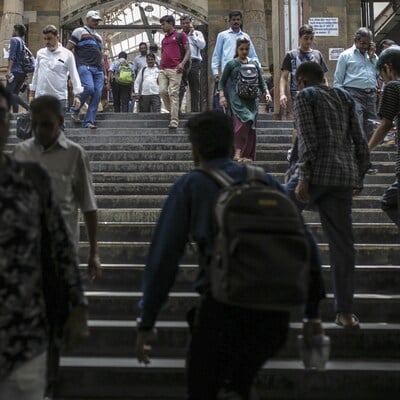[ad_1]
After witnessing a decline for five consecutive years, India’s unemployment rate stagnated at 3.2 per cent in July-June 2023-24, thus reflecting deterioration in labour markets, according to the latest annual Periodic Labour Force Survey (PLFS) report, released by the National Statistical Office (NSO) on Monday.
This stagnation comes amid a swelling labour force in both urban and rural areas, meaning that the economy was not able to generate a commensurate number of jobs during the year.
The data showed the unemployment rate in rural areas slightly increased to 2.5 per cent in 2023-24 from 2.4 per cent in 2022-23. Meanwhile, the unemployment rate in urban areas declined to 5.1 per cent from 5.4 per cent during the period.
Besides, the unemployment rate for women rose to 3.2 per cent in 2023-24 from 2.9 per cent in 2022-23, while the jobless rate for males slightly declined to 3.2 per cent from 3.3 per cent during the same time.
The unemployment rate for a one-year period under “usual status” for persons aged 15 years saw stagnation for the first time since the annual survey was first launched in April 2017.

Before the PLFS, the National Sample Survey Organisation (now known as NSO) used to release data related to employment and unemployment based on household socioeconomic surveys once every five years.
In 2017-18, the all-India unemployment rate stood at 6 per cent.
Under “usual status”, employment is determined based on a reference period of 365 days preceding the date of the survey, as distinct from “employment status”, which is determined based on a reference period of seven days, known as the current weekly status (CWS) of the person.
The latest survey also showed a significant increase in the labour force participation rate (LFPR), which represents the share of people either working or seeking work in the population, to 60.1 per cent in 2023-24 from 57.9 per cent in 2022-23 at national level.
The rural LFPR stood at 63.7 per cent, up significantly from the 60.8 per cent in 2022-23, while its urban equivalent increased to 52 per cent from the 50.4 per cent over the same period.
In terms of broad employment status, which gives an idea of the quality of employment, the share of people having regular or wage employment increased to 21.7 per cent in 2023-24 from 20.9 per cent in 2022-23. On the other hand, the share of people engaged in self-employment, including unpaid household work or running a small business, increased to 58.4 per cent from 57.3 per cent in the period under review.
Santosh Mehrotra, visiting professor at the University of Bath, said labour markets were yet to recover as the share of wage employment was significantly and consistently lower than in the pre-pandemic period, leading to an increase in self-employed individuals.
In 2018-19, wage employment accounted for 23.8 per cent of the total.
“The corresponding increase in labour force participation and the share of the self-employed shows that more and more people are joining the labour markets and the economy isn’t able to generate enough decent jobs for them, which is leading to their being engaged as unpaid household help. In a way, the impact of reverse migration during the pandemic, which saw the addition of nearly 50 million people to agriculture is yet to be overcome,” he added.
First Published: Sep 23 2024 | 8:13 PM IS
[ad_2]
Source link

